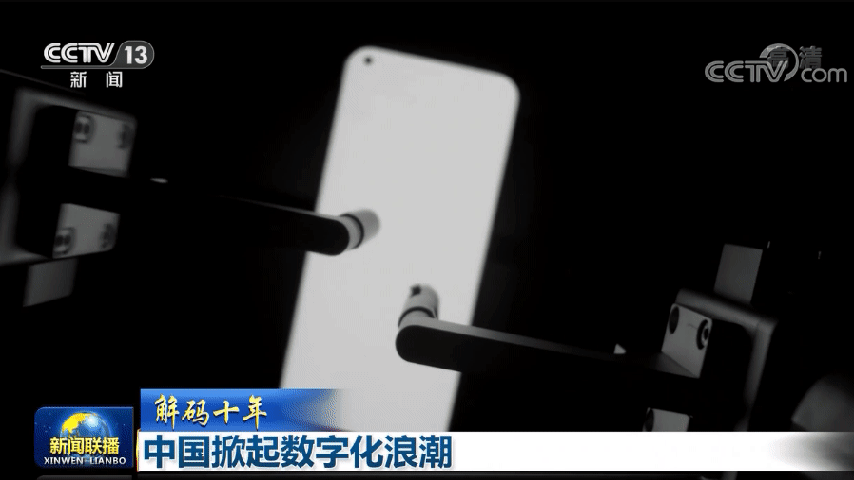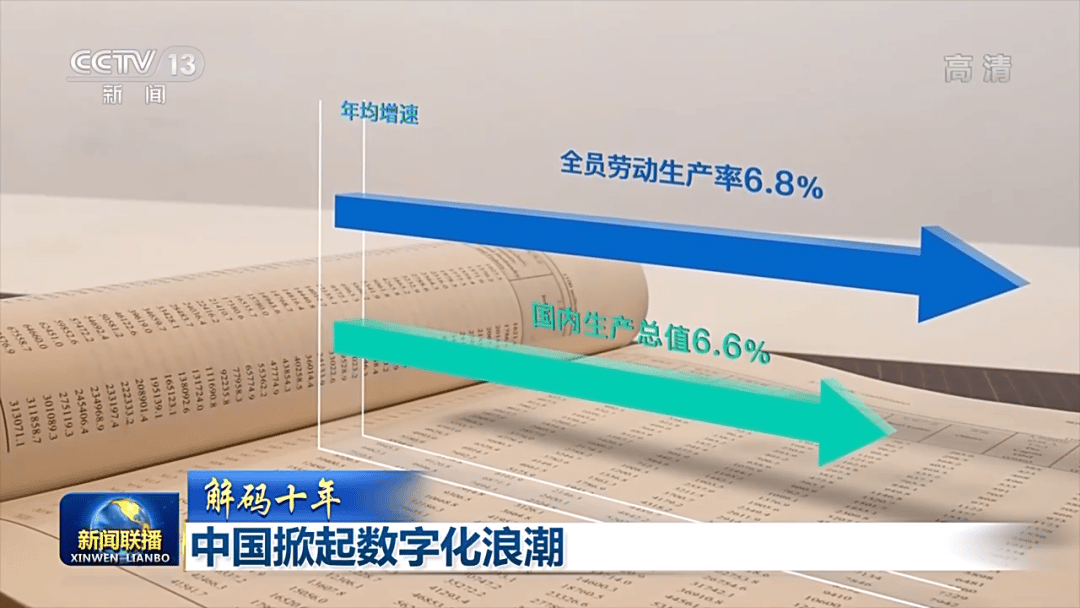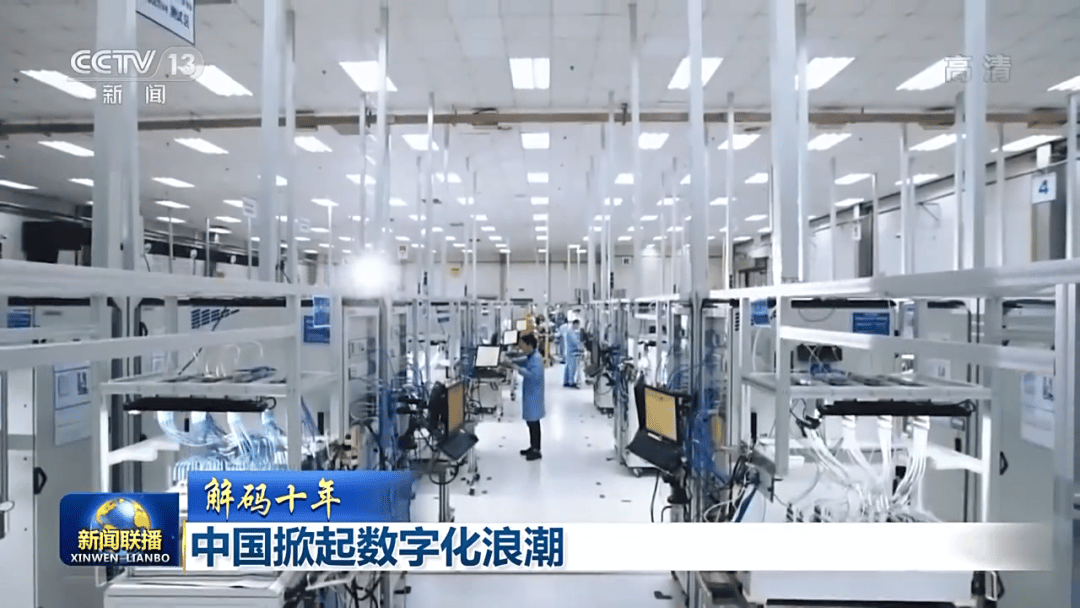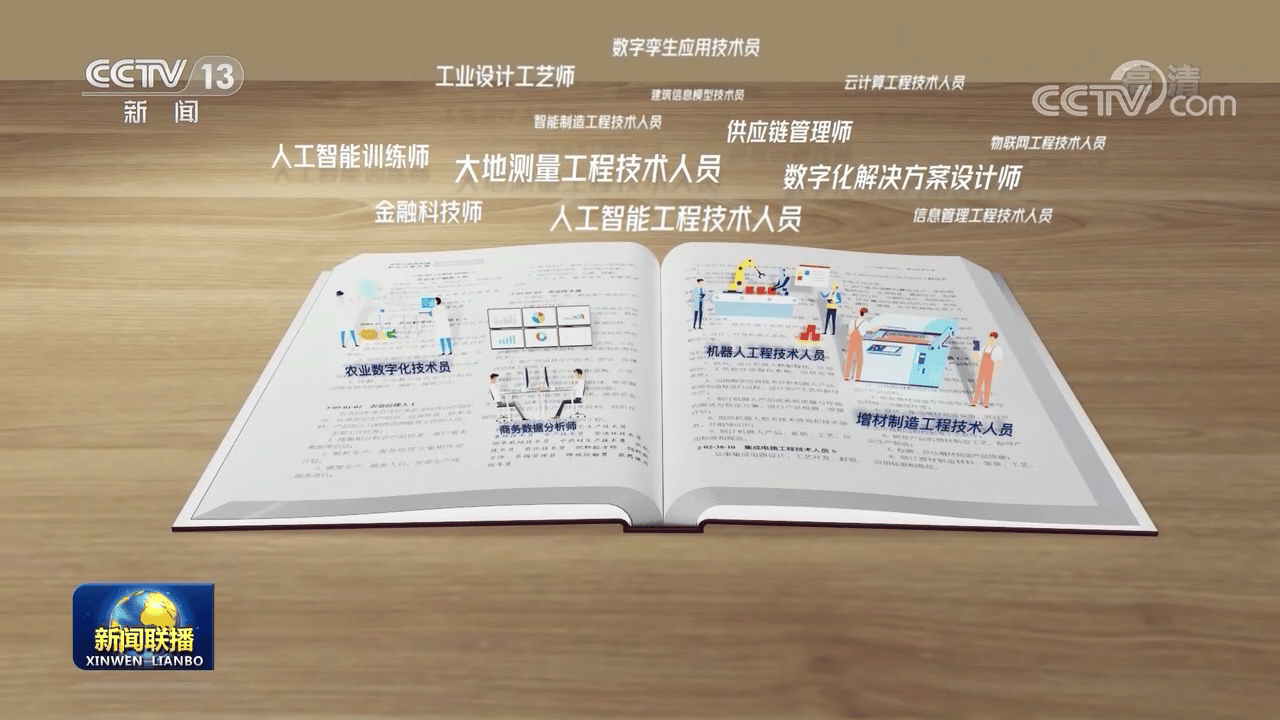In the past ten years, the scale of China’s digital economy has grown from 11 trillion yuan to 45.5 trillion yuan, and its proportion in GDP has increased from 21.6% to 39.8%. Today, from cities to rural areas, from society to individuals, from online to offline, China has set off a wave of digitalization.
Since the 18th National Congress of the Communist Party of China, China’s digital economy has developed at an unprecedented speed, with a wide range of radiation and an unprecedented degree of influence, driving profound changes in production and lifestyle.
In the vast territory of China, there are more than 1.9 million 5G base stations scattered everywhere. In addition to hundreds of millions of mobile phones connected to the world’s largest communication network, there is also a huge user group, that is, factories.

In the Yizhuang Economic and Technological Development Zone in Beijing, at night, in this smart factory, flashing light strips indicate that production is in full swing. More than 200 high-definition cameras and more than 8,000 sensors collect production data in real time. The machine can automatically perceive, transmit and diagnose problems by analyzing the data to complete fully automated production.

In the National Industrial Internet Big Data Center, China’s industrial Internet platform brings together millions of digital factories, with a total of more than 70 million sets of connected devices. What kind of changes has the new industrial ecology brought to the efficiency of economic operation?

With the help of professionals from the National Bureau of Statistics, we have calculated the growth of labor productivity of all employees from 2013 to 2021. The average annual growth rate of 6.8% is faster than the average annual growth rate of GDP of 6.6%. Digital technology The development has brought about real efficiency changes.
This decade, the wave of digitalization has also reshaped the social division of labor. In the past ten years, China has made two revisions to the National Occupational Classification Code promulgated in 1999. In the latest occupation classification ceremony, there are more than 90 digital occupational identifications for the first time, including “robot engineering technicians”, “additive manufacturing engineering technicians”, “business data analysts” and “agricultural digital technicians”… It can be seen from these new occupational names that today, digital occupation practitioners have been distributed in all aspects of social production, circulation, distribution and consumption, covering the primary, secondary and tertiary industries.

This is a data map produced based on the flight trajectories of tens of thousands of agricultural drones across the country. Clusters of light clusters change with the seasons and appear in the main agricultural production areas from south to north. In Bayingoleng Mongolian Autonomous Prefecture, Xinjiang, in 2021, there will be a never-before-seen figure on the vast cotton fields. Two people, 4 drones, and more than 300 sets of intelligent equipment will complete the 3,000-mu cotton field from planting to harvesting.
The unmanned planter drags straight traces on the ground, and the route error is within 2.5 cm. Watering, monitoring, and fertilizing can be done with a small tablet computer. When the harvest season arrives, this 3,000-mu cotton field will harvest cotton. 700 tons. Agricultural production, which once relied on traditional methods, is now being modernized at an unimaginable speed.
In the past ten years, the scale of China’s digital economy has grown from 11 trillion yuan to 45.5 trillion yuan, and its proportion in GDP has increased from 21.6% to 39.8%. Today, from cities to rural areas, from society to individuals, and from online to offline, the wave of digitalization in China is injecting strong impetus into high-quality economic development.